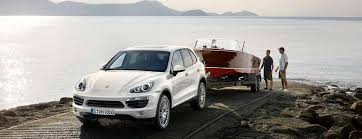Towing weights explained
Blog | March 27th, 2020A car’s towing capacity doesn’t always equate how much it can tow
So you’ve bought a new vehicle with a 3000kg towing capacity, which means you can tow a 3.0-tonne caravan, right? Well, not necessarily. There are other factors that determine how much you can tow, such as the towbar strength and total weight of the tow vehicle.
As well as understanding the different factors, you also need to master towing terminology, some of which seems suited to people with white coats and slide rules. So here goes …

TRAILER WEIGHT
Trailers (including caravans, horse floats, and so on) are usually assessed by their total weight, which means their unladen weight (also known as tare weight) plus the maximum payload they can carry.
There are two different total weights to consider:
Aggregate trailer mass (ATM): This is the tare weight of the trailer plus its maximum payload when uncoupled from a vehicle. This is also referred to as gross trailer weight.
Gross trailer mass (GTM): This is the weight of the fully loaded trailer on its own axle, which will be less than the ATM as it excludes much of the trailer’s underpinnings. Not to be confused with gross trailer weight, which is another name for ATM.
VEHICLE WEIGHTS
Kerb weight: This is the empty weight of a vehicle with a full tank of fuel, and doesn’t include payload including passengers, luggage and accessories such as bullbars and roof racks.
Gross vehicle mass (GVM): The total weight of the tow vehicle – the kerb weight plus payload including passengers, luggage and accessories.
GROSS COMBINATION MASS (GCM)
This is maximum total weight allowed for both the vehicle and trailer and is the sum the vehicle’s GVM and the trailer’s ATM.
TOWING CAPACITY
Most cars have an official towing capacity, which is declared by the manufacturer and refers to the maximum trailer ATM a vehicle can pull efficiently while remaining stable. Towing capacity is based on things such as the vehicle’s power and torque, rear-axle strength, frame durability and even the grip of the standard tyres.
Braked towing capacity: This is the most common figure, and refers to the ATM of a trailer which has its own brakes.
Unbraked towing capacity: This figure refers to towing a trailer without brakes and is usually significantly lower the braked towing capacity because the vehicle has to absorb much of the braking force.
TOWBALL LOADING
Also referred to as downward force/weight, this refers to the maximum vertical weight that can be applied on the tow ball without taking too much weight off the front wheels and reducing the vehicle’s ability to steer and brake. This is one reason why front-wheel-drive vehicles have a lower towing capacity than rear- and all-wheel-drives.
Towball loading is a factor in determining towing capacity, however, even a trailer that is lighter than the specified towing capacity can exceed towball loading if it is front-heavy.
As rule the towball loading is usually around 10 percent of the maximum towing capacity.
GCM AND TOWING CAPACITY
This is where specified towing capacity can be misleading as any extra weight added to the tow vehicle may need to be subtracted from the trailer’s ATM to stay within the GCM limit.
For example, let’s say the maximum GCM allowable for your vehicle is 6000kg and it has a 3500kg braked towing capacity.
In theory this means a vehicle weight (GVM) of up to 2500kg in order to tow 3500kg. This is fine if your vehicle weighs the same as it did when it rolled out of the factory, but adding accessories such as a tow bar (60kg), bulbar with winch (100kg), extra spare wheel (15kg), roof rack (40kg) and a heap of extra camping gear (300kg) takes the GVM to 3015kg. This means, the maximum towing capacity is now 2985kg in order to stay at 6000kg GCM.
If purchasing a vehicle with towing in mind it’s a good idea to have a decent buffer between the maximum towing capacity and your intended tow load of around 20 percent.
TOWBAR CAPACITY
Finally, your vehicle’s towing capacity is only as good as the towbar. The towbar’s maximum towing weight may be different to the one set for the vehicle.
For example, if your car has a towing capacity of 2800kg but the towbar is rated at 2500kg you will only be allowed to tow up to 2500kg. Alternatively, if the towbar is rated at 3000kg and car’s towing capacity is 2800kg, you go with the lower number.
For more information visit the RMS LINK – https://www.rms.nsw.gov.au/roads/safety-rules/road-rules/towing.html
